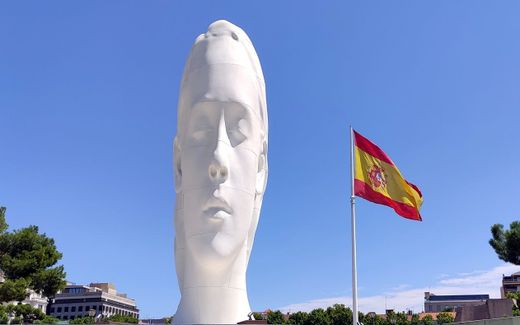Art is controversial, how can we turn it into something good?

Andrew Tate protests against a depiction of art. One of the opening scenes of the Olympics in 2024 caused great upheaval, because it would show the Last Supper. Photo EPA, Robert Ghement
Christian Life
Art is controversial. It sometimes conveys a message that we don’t want to hear. How should a Christian look at art in a secular world?
With its skyscrapers, Frankfurt am Main is undoubtedly the European city that most resembles an American metropolis today. In the Bockenheim area, we find a recently built park named Neuer Rebstockpark. The deliberately dried canal reflects the deconstructivist philosophy of one of its designers, the American Peter Eisenmann.
This is a series about the Christian view of today’s world.
Near the park stands the Messeturm, a skyscraper inaugurated in the late 1980s. Its multiple forms are an expression of postmodernism as conceived by its architect Helmut Jahn.
Human imagination
So, what does philosophy have to do with architecture? As its name suggests, the deconstructivist philosophy seeks to deconstruct. But what exactly? Everything that culture has built over the centuries. Postmodernism, on the other hand, seeks to reconstruct upon human imagination.
Given that German culture has been based on Christianity for centuries, the message conveyed by the architecture in Bockenheim seems clear: What Christianity has built must be deconstructed so that man can rebuild according to his own imagination.
This example from architecture shows how much art influences the culture of a city or nation. Art is a powerful tool that can change the atmosphere according to the worldview it communicates. Architecture, cinema, music, and many other art forms have far more influence on people’s lives than philosophy books or political ideologies, even though these have defined Europe over the last few centuries.
Proof
If this is the case, it is crucial that Christians are able to interpret and conceive art.
But first of all, why does art exist? Quite simply because man was created in the image of God. The existence of art is clear proof that man is not an animal, because animals cannot create art. Every human being, Christian or not, has the capacity to create art because he or she is created in the image of God, the Creator Himself. The difference between God and man is that God creates from nothing (ex nihilo), while man creates from (or remodels) what God has created.
However, the fact that man has the gift of creativity does not necessarily mean his art is good. Every man operates according to his worldview. Therefore, all artworks contain a certain message.
Declaring that art does not communicate any message is a message in itself
This goes against the idea of ‘art for art’s sake’, a philosophy that emerged in France in the nineteenth century. It asserted that the intrinsic value of art is independent of any didactic function or social value. In other words, it is possible to conceive of art that does not communicate any message. However, declaring that art does not communicate any message is a message in itself.
Technical skill
The next question is, then, how should Christians analyse these artworks?
Firstly, art can be divided into two categories: either it glorifies God or it glorifies man. The idea of neutral art, or “art for art’s sake”, does not exist. An artist who does not glorify God through his art ends up glorifying himself.
On the other hand, art can honour God. It does not necessarily need to be “preachy” to do so, but it must be appropriate. God commanded that certain elements be added to the temple simply for the sake of beauty (e.g., 2 Chronicles 3:6). And in Hebrew, beauty is intrinsically linked to appropriateness.
The American Christian philosopher Francis Schaeffer said that the artist’s worldview and message must be separated from his technical skill. It is possible to appreciate the latter while rejecting the former.
These artists deserve to be celebrated for their gifts.
In his oracle against idol carvers, Isaiah did not accuse them because they carved, nor even because their carvings were artistically developed. Isaiah accused them for the purpose for which they were intended, the worship of false gods, which communicated a false worldview to the nation of Israel (see Isaiah 42).
Helmut Jahn’s Messeturm and Peter Eisenmann’s Neuer Rebstockpark are certainly beautiful technical achievements. These artists deserve to be celebrated for their gifts. However, the worldview they communicate must be rejected.
Greatness of God
Knowing how much art can transform an entire culture, Christians must invest in understanding and especially producing art. Powerful artworks could explicitly communicate the Gospel, as many medieval painters did.
However, it can also show the beauty and order of God’s creation. This can be done in numerous ways, be it through songs or films celebrating Christian marriage, or, to return to our example above, through architectural styles that convey the greatness of God.
But regardless of the type of art, Christian artists are called to create works that will inspire society so that culture may glorify God.
Related Articles











